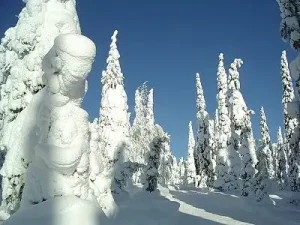Imagine a magical place where towering trees grow in water, colourful birds sing from the treetops, and giant crocodiles bask in the sun. Welcome to Bhitarkanika National Park, a natural treasure in Odisha, India! This fascinating park is a mix of lush mangrove forests, winding waterways, and incredible wildlife. Let’s dive into why Bhitarkanika is truly amazing.

A Mangrove Wonderland
Bhitarkanika National Park is famous for its mangrove forests. But what are mangroves? These are trees and shrubs that grow in salty or brackish water, creating a unique ecosystem where land meets the sea. The mangroves in Bhitarkanika form a green labyrinth of roots and branches, making it one of the largest mangrove ecosystems in India.

Walking or boating through these forests feels like stepping into another world. You’ll spot beautiful roots stretching out of the water, providing homes for fish, crabs, and other tiny creatures.
Home to Giant Crocodiles
Have you ever heard of saltwater crocodiles, the largest crocodiles in the world? Bhitarkanika is home to many of them! These reptiles can grow over 6 metres long and weigh more than 1,000 kilograms.

One of Bhitarkanika’s most famous residents was a crocodile named Kaalia, believed to be one of the largest ever recorded. Don’t worry, though; visitors enjoy these crocodiles safely from boats or observation towers.

Birds of All Colours
Bhitarkanika is a paradise for bird lovers. It’s part of the Ramsar Wetland Sites, making it an essential home for migratory birds. Every winter, thousands of birds fly from faraway places like Siberia to nest here.

Some of the birds you might see include:
- Egrets and herons, which are wading birds with long legs.

- Kingfishers are known for their dazzling colours and fishing skills.

- Sea eagles and kites soaring high above the water.

Other Amazing Animals
The park is also home to other fascinating creatures. If you’re lucky, you might spot:

- Deer and wild boars roam the forests.

- Monitor lizards, which look like miniature dragons.

- Snakes, including pythons, slither through the trees.

The Waterways of Bhitarkanika
The park has a network of rivers and creeks that you can explore by boat. Boating is one of the best ways to experience Bhitarkanika. Imagine gliding through calm waters surrounded by green mangroves, with birds chirping around you.

The rivers also support fishing communities that have lived in harmony with nature for generations.
Why It’s Important to Protect Bhitarkanika
Bhitarkanika is more than just a beautiful place; it plays a crucial role in protecting our environment. Mangroves act like shields, protecting the coast from storms and floods. They also trap carbon dioxide, helping fight climate change.

Unfortunately, this fragile ecosystem is threatened by pollution, deforestation, and rising sea levels. That’s why efforts are being made to conserve Bhitarkanika and its wildlife.
How to Visit Bhitarkanika
Visiting Bhitarkanika is an adventure! Most people travel by boat from places like Gupti or Dangamal, which are entry points to the park. The best time to visit is between November and February when the weather is cool, and many birds have migrated here.

Stay overnight at one of the eco-friendly lodges or camps nearby to fully enjoy the experience.

Fascinating Facts About Bhitarkanika
- Bhitarkanika is often called the “Mini Amazon of India” because of its dense forests and rich wildlife.

- It’s home to over 215 species of birds and countless other animals.

- It was declared a national park in 1998 to protect its unique environment.

Conclusion
Bhitarkanika National Park is truly a place where nature comes alive. Its mangroves, crocodiles, and vibrant birdlife make it an unforgettable destination. It’s also a reminder of how important it is to protect the natural world for future generations.
So, if you ever get a chance, pack your bags, grab a camera, and visit this extraordinary park. Bhitarkanika is waiting to amaze you!
For more interesting articles, please visit www.kidzherald.com





